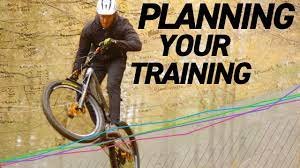Last Updated on March 2, 2023 by
If you are an avid mountain biker, you may be interested in learning some tips to help you increase your riding skills. In this article, we will talk about improving your riding skills and preventing common mountain biking injuries. We’ll also discuss how to maintain good body-bike separation so that you don’t hurt yourself when you’re on your bike.
Table of Contents
Body-Bike Separation
Most mountain biking coaches will instruct riders on the fabled “bike and body separation.” This is a fundamental technique used to maintain balance on a bicycle. However, many cyclists need more core strength to perform such maneuvers.
The best way to achieve a good separation is to rotate the hips into a turn. This can be achieved by leaning the bike towards the inside leg. Keeping the knees slightly bent is key. Angulation is also helpful in promoting this effect.
In the enduro MTB training program, the best method is to prepare for the next obstacle in advance. The benefits of good preparation include increased confidence and control. For example, the rider can steer around obstacles with less effort.
Proper Seat Height
The wrong saddle height can cause discomforts, such as knee pain, lumbar vertebrae pain, and ankle injuries. In addition, it can decrease the amount of power you have when riding. So, knowing how to find the right saddle height for MTB training is essential.
There are two ways to measure your bike’s saddle height. One involves a simple measurement, while the other requires a more precise method.
The first method is called the ‘Heel method.’ This simple method uses a book to calculate the height of your seat. You’ll have to place the book’s spine between your legs to do this. The height will be measured from the floor to the top of your spine, and then 0.883 will be multiplied.

Proper Suspension
According to professionals, like those at Train to Ride, the right suspension setup can improve the quality of your training. There are many variables to consider, including the terrain you ride and your riding style. However, if you follow this simple guide, you’ll be able to set up a bike that best fits your needs.
First, decide if you want a hardtail or a full-suspension MTB. Hardtail bikes are more practical, with a rigid rear end, while full-sus bikes are more stylish and offer a lower impact on your body. Full-sus models have more traction and braking power, as they have front and rear shock absorbers.
Second, you must decide whether to use coil springs or air chambers. Coil springs are linear, while air shocks bounce up and down like a pogo stick.
Exercises to Prevent Common Mountain Biking Injuries
Many injuries can occur while mountain biking. These include muscle cramps, soreness, strains, and sprains. However, some exercises can help reduce the risk of these injuries.
It is essential to maintain a strong core as well as a healthy spine. Practicing core strengthening and cross-training will help prevent injury. Creating a solid back can also help you become more powerful.
The most common injuries in mountain biking are cuts, lacerations, and fractures. These can be treated by using a minimalist first aid kit. But, if bleeding cannot be controlled, then it is best to seek medical attention.
Falling off the bike is another common injury. Getting back on your bike is one way to limit the damage, though the impact is usually painful. You should also make sure you wear the proper protective gear. This includes knee pads and elbow pads.
Apart from that, if you are interested to know about Empower Employees then visit our World category.
















